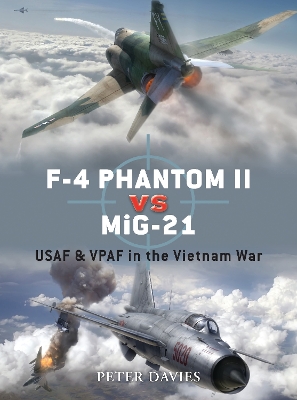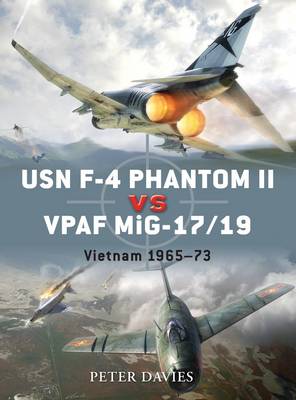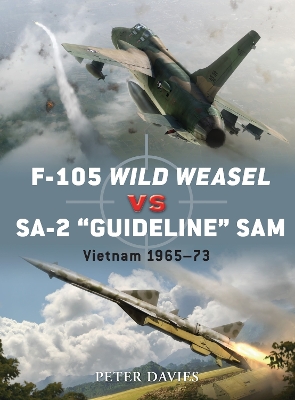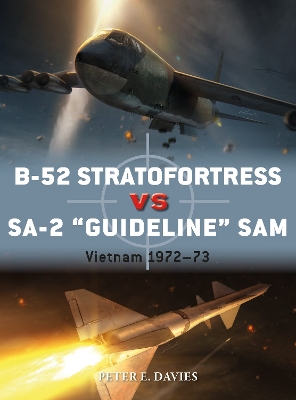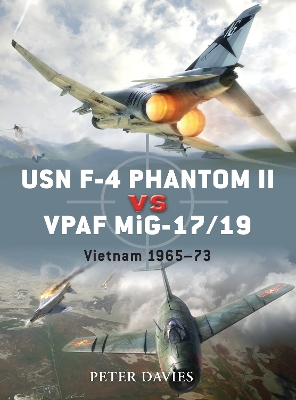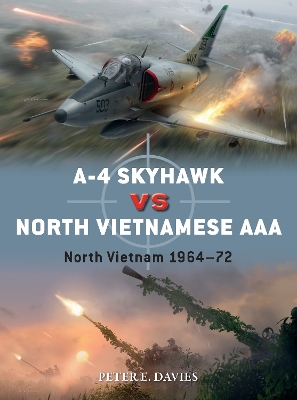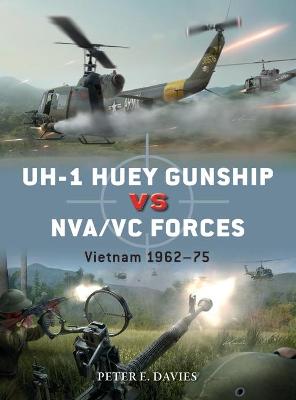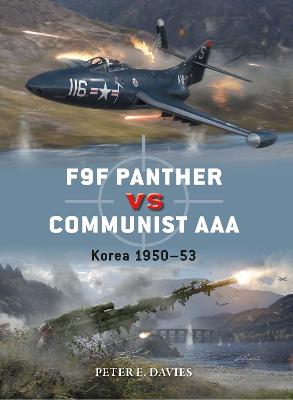Duel
4 primary works • 9 total works
Book 12
Book 23
Book 35
Book 95
The MiG-17 was the lightweight, highly manoeuvrable defending fighter it encountered most often in 1965-68 during Operation Rolling Thunder. A development of the MiG-15, which shocked UN forces during the Korean War, its emphasis was on simplicity and ease of maintenance in potentially primitive conditions.
Fully illustrated with stunning artwork, this book shows how these two aircraft, totally different in design and purpose, fought in a series of duels that cost both sides dearly.
The losses of several of its most feared, powerful and supposedly invincible bombers per night to a torrent of Soviet missiles during the closing stages of the Vietnam War was sobering to Americans, but the B-52s' crushing attacks virtually eliminated North Vietnam's defences and forced a peace settlement. This fascinating book analyses the roles of the SA-2 operators and the B-52 Electronic Warfare Officers (EWOs) using specially commissioned artwork as well as first-hand accounts, and traces the cat-and-mouse tactics that each side employed.
During the 1965-68 Rolling Thunder period, up to five attack carriers regularly launched A-4 strike formations against North Vietnam. These formations faced an ever-expanding and increasingly coordinated Soviet-style network of anti-aircraft artillery missiles and fighters. Skyhawk pilots were often given the hazardous task of attacking anti-aircraft defences and to improve accuracy, they initially dropped ordnance below 3000 ft in a 30-degree dive in order to bomb visually below the persistent low cloud over North Vietnam, putting the aircraft within range of small-arms fire. The defenders had the advantage of covering a relatively small target area, and the sheer weight of light, medium and heavy gunfire directed at an attacking force brought inevitable casualties, and a single rifle bullet could have the same effect as a larger shell. This illustrated title examines both the A-4 Skyhawk and the Vietnamese AAA defences in context, exploring their history and analysing their tactics and effectiveness during the conflict.
The F9F Panther was one of the many fighters converted for ground-attack duties, following an established US tradition. Originally designed as a jet fighter, in April 1951 it became the first jet to launch from a carrier with bombs loaded, using them to destroy a crucial railway bridge at Songjin. The Panther’s four 20 mm guns were considered to be very effective for flak suppression and these aircraft were used as escorts for propeller-driven AD Skyraider and F4U Corsair attack aircraft. However, later in 1951, flak damage to Panthers increased as the Chinese established better AAA weapons to defend key transport routes. The communist AAA crews had heavy guns of 37 mm caliber and above. Gunners could use optical height finders, predictors and in many cases radar control. They learned to conceal their weapons in civilian buildings, use wires to bring aircraft down, and set up false targets as "flak traps."
Both opponents’ tactics and gunnery are explored in depth in this study of the F9F Panthers and of their adversaries. Containing full-color illustrations including cockpit scenes and armament views, this innovative volume also includes a detailed analysis of the US Navy Panthers’ loss rates and their causes.
